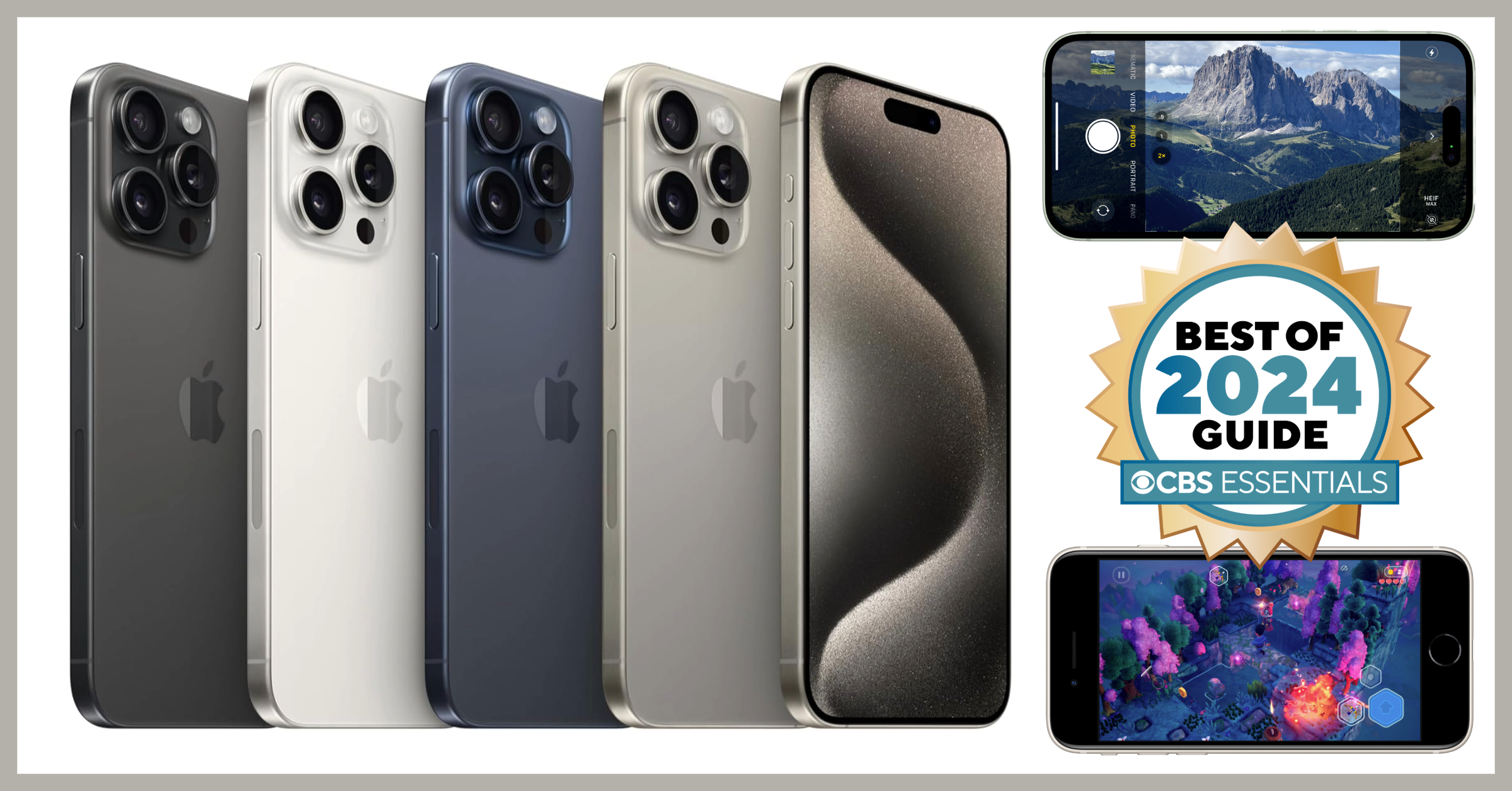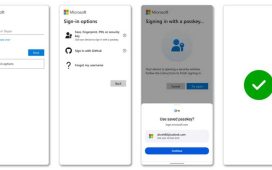Apple
These days, any smartphone — whether it’s an Apple iPhone or Android phone — can handle the same everyday chores, like calls, texts, games, web surfing, email and more. But there are reasons you might want to switch from an Android to an iPhone. Maybe you already use the Apple iCloud service and you want a phone that plays nicely with that. Or maybe you already have an iPad and what the two devices to seamlessly share data. Because the iPhone is so popular around the world — with more than 1.46 billion iPhones currently active — there’s also a vast ecosystem of cases and accessories available.
Top 5 reasons to switch from Android to an Apple iPhone
There are many reasons why Android smartphone users should seriously consider making the switch to an Apple iPhone, but our team of in-house smartphone experts have compiled this list of the five biggest..
#1: iPhones tend to be easier to use
Plenty of tech-savvy people prefer Android phones because they offer many more customization options, but others often prefer the ease of use of the iOS operating system. This includes how simple it is to find and launch apps and then jump between them, or find information you need quickly. And if you make a mistake, there’s almost always a way to undo your last action (often just by giving the phone a quick shake or by tapping on an icon).
In keeping with the theme of simplicity, Apple maintains a similar interface across all of its devices and services. So once you’re familiar using an iPhone, there’s practically no learning curve if you buy a new iPad, Apple Watch or Mac computer.
#2: The Apple iPhone shares data seamlessly with other Apple products
With the help of Apple’s iCloud service, all of your data, documents, files and photos can automatically sync between all of your other Apple gear, so what you need is readily accessible on any Apple gadget you’re using.
All you need to do is set up one free Apple ID, which automatically gives you access to your own iCloud account. Then, once you link your iPhone, iPad, Apple Watch, iMac, MacBook, Apple TV, AirPods or AirTags to that account, all of your data automatically syncs, while keeping a secure backup of everything in the cloud.
#3: Apple reviews all the apps in the App Store
There are more than 3.8 million iOS apps available on the App Store for your iPhone. All of them have been evaluated by Apple to ensure none contain malware, viruses or any content that goes against Apple’s policies. For example, no iPhone apps can contain pornography. Apple also has strict policies that prevent developers from using your personal information or accessing content stored on your phone without your permission.
Meanwhile, whether your iPhone uses FaceID or TouchID to unlock your phone or approve purchases, your biometric data is stored on a separate chip in your iPhone — one that’s not accessible to Apple or any developers.
#4: The iPhone is safer than Android when it comes to viruses and malware
Between the hardware in the iPhone and its iOS design, it’s very difficult to accidentally install any type of malware or virus. While this is not 100% foolproof, an iPhone tends to be safer to use than an Android device.
All iPhones have safeguards that protect both the information in your phone and your privacy. The best way to further protect your phone is to update to the latest version of iOS and keep all of your apps up to date. This can be done for free.
#5: Parental control options are better on the iPhone
Without using apps (some of which require a subscription), there are very few parental controls built into Android smartphones. But the iPhone offers a robust collection of parental controls that an adult can maintain easily. This makes the iPhone a better choice for families.
Adults can control screen time, as well as the types of content a child can access. For example, a parent can prevent a child from listening to music with explicit lyrics or watching a movie that has a PG-13 or R rating. Children can also be prevented from making in-app purchases or using specific features (such as FaceTime, the Camera app or Safari). But if a child is permitted to use a phone’s web browser, a parent can activate filters that block certain types of content.
More information about how to set up and manage parental controls on an iPhone is on Apple’s website. Meanwhile, using the family sharing feature, family members can share content and subscriptions, as well as calendar data and location information.
Apple iPhone models, configurations and prices
While you can still purchase the Apple iPhone 13 and iPhone 14, we recommend going with the Apple SE (3rd generation), if you’re looking for an entry-level smartphone. Choose the iPhone 15 or iPhone 15 Plus if you need a mid-priced phone with more than enough power for the average user.
Apple
For even greater power, you’ll want the iPhone 15 Pro. Select the iPhone 15 Pro Max if you want the latest and greatest that Apple has to offer, including an advanced touchscreen, superior features and an enhanced camera system. Be sure to read our in-depth review of the iPhone 15 Pro Max to learn more about this high-end smartphone.
Each iPhone model comes in multiple colors and has several storage options, which can not be upgraded after purchase. All current iPhones run the latest version of iOS 17 and come with the same collection of apps, but three main things set each model apart — its screen size (and type), its processor and the phone’s camera system.
Based on where you get the phone, whether or not you trade in an old one, or if you activate a new iPhone with a specific provider, how much you’ll actually pay will vary. In fact, when you sign up for some cellular plans with AT&T or Verizon, you could get your choice of any iPhone model for free (or reduced price). And of course, interest-free financing options are available.
Apple iPhone SE
The iPhone SE comes in midnight black, starlight or (Product) Red. It offers a 4.7-inch Retina HD display and runs using the Apple A15 Bionic processor.
- 64GB internal storage: $429
- 128GB internal storage: $479
- 256GB internal storage: $579
Apple iPhone 15
With it’s 6.1-inch Super Retina XDR (OLED) display, the iPhone 15 is available in five casing colors, including blue, pink, yellow, green and black. It’s powered using the Apple A16 Bionic processor.
- 128GB internal storage: $799
- 256GB internal storage: $899
- 512GB internal storage: $1,099
Apple iPhone 15 Plus
The iPhone 15 Plus is also available in five casing colors, including blue, pink, yellow, green and black. This phone offers a 6.7-inch Super Retina XDR display and runs using the Apple A16 Bionic processor.
- 128GB internal storage: $899
- 256GB internal storage: $999
- 512GB internal storage: $1,199
Apple iPhone 15 Pro
Featuring a 6.1-inch Super Retina XDR display, the iPhone 15 Pro runs using the Apple A17 Pro processor. It’s available in your choice of four casing colors — natural titanium, blue titanium, white titanium or black titanium.
- 128GB internal storage: $999
- 256GB internal storage: $1,099
- 512GB internal storage: $1,299
- 1TB internal storage: $1,499
Apple iPhone 15 Pro Max
The iPhone 15 Pro Max is the most powerful iPhone currently available. It offers a durable titanium casing, a gorgeous 6.7-inch Super Retina XDR touchscreen display, runs using the Apple A17 Pro processor and has an advanced camera system. It’s available in four casing colors, including natural titanium, blue titanium, white titanium or black titanium.
- 256GB internal storage: $1,199
- 512GB internal storage: $1,399
- 1TB internal storage: $1,599
Easily switch from Android to an iPhone
Apple
Once you activate an iPhone, there’s a one-time setup process. Your iPhone will guide you step-by-step through this.
Be sure to download and install the free Move to iOS app onto your Android phone. It’s available from the Google Play Store. This app makes it easy to transfer your contacts, messages, WhatsApp content, photos, videos, email accounts and calendars to your new iPhone.
During the setup for the iPhone, select the “Set up without another Apple device” option. When given the option to transfer apps and data, select the “from Android” option. Then launch the Move to iOS app on your Android phone and then follow the prompts. Keep in mind, you have the option of keeping your old phone number.
When it comes to keeping up with the latest tech, our team of consumer experts has you covered with product roundups, in-depth reviews and details about the best deals. We cover everything from laptops and action cameras, to the best TVs, smart grills, tablets, smartwatches and noise-canceling earbuds and headphones.









